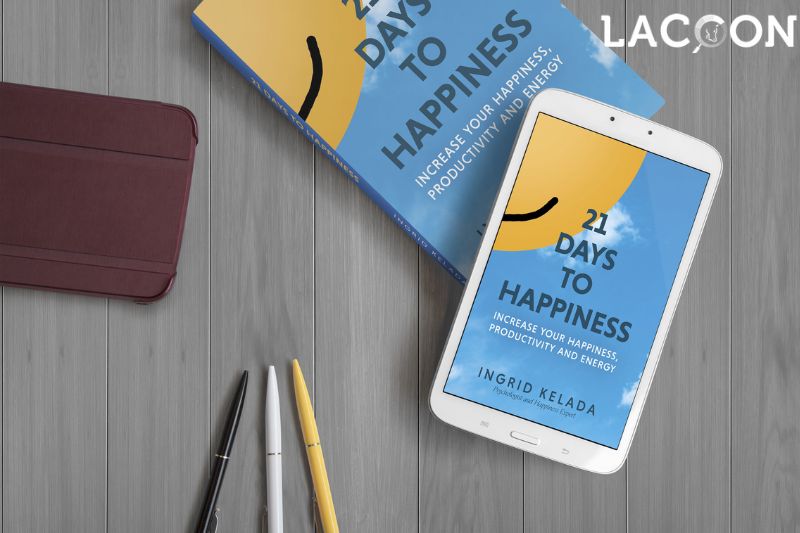Have you ever heard of the “21-day trick”? This popular concept has been widely promoted as a tool for breaking bad habits and establishing new, positive ones.
The premise is simple: if you consistently practice a new behavior for 21 days, it will become a habit, ingrained in your daily routine.
But what is the 21 day trick?
In this article, Lacoon will delve into the origin, variations, and science behind the 21 day trick, discuss its pros and cons, and provide practical tips for implementing it in your life.
The Origin of the 21 Day Trick

The 21 day trick can be traced back to Dr. Maxwell Maltz, a plastic surgeon and author of the 1960 book “Psycho-Cybernetics.” Dr. Maltz observed that it took his patients approximately 21 days to adjust to their new appearance after surgery.
He generalized this observation, suggesting that it takes about 21 days for people to form new habits or adjust to new circumstances.
Over time, this idea gained popularity and became a widely accepted belief, frequently promoted by self-help gurus and productivity experts.
What is the 21 Day Trick?
The 21 day trick, as it is commonly understood, is the idea that if you practice a new behavior consistently for 21 days, it will become a habit.
By committing to a new routine, you are essentially rewiring your brain to adopt this new behavior, making it an automatic part of your life.
This concept can be applied to various aspects of life, including health and fitness, personal development, or work productivity.
There are different interpretations and variations of the 21 day trick. Some proponents argue that you must practice the new behavior every single day for 21 days, while others suggest that it’s more about consistency over the 21-day period.
Regardless of the specific approach, the core principle remains the same: dedicating time and effort to create positive change in your life.
The Science Behind the 21 Day Trick

The 21 day trick has been the subject of various scientific studies, with mixed results. Some research supports the idea that habit formation can occur within this time frame, while other studies suggest that it may take longer for new habits to become ingrained.
A study published in the European Journal of Social Psychology in 2009 found that, on average, it takes 66 days to form a new habit.
However, the time it takes to develop a habit can vary greatly depending on the individual and the complexity of the behavior. In some cases, habits can be established in as little as 18 days, while in others, it may take up to 254 days.
Does the 21 Day Trick Really Work?

There are both pros and cons to the 21 day trick. On the positive side, this approach encourages individuals to commit to new behavior and provides a specific time frame for achieving results.
Many people have successfully used the 21 day trick to improve their lives, develop healthier habits, or become more productive.
However, there are also limitations and criticisms of the 21 day trick. Some argue that the 21-day time frame is arbitrary and not based on solid evidence.
Others point out that the trick may not be universally applicable, as the time required to form a habit can vary depending on the individual and the specific behavior.
Despite these criticisms, the 21 day trick can still be a useful tool for initiating positive change. The key is to understand that forming a new habit may take longer than 21 days and to remain persistent and patient throughout the process.
How to Implement the 21 Day Trick

If you’re interested in trying the 21 day trick, here are some practical tips and advice to help you get started:
- Choose a specific, achievable goal: Focus on one habit or behavior that you want to change or adapt. Make sure your goal is clear and attainable.
- Break it down into smaller tasks: If your goal is complex, break it down into smaller, more manageable tasks that you can accomplish each day.
- Track your progress: Keep a journal or use a habit-tracking app to monitor your progress and maintain accountability.
- Be consistent: Aim to practice your new behavior daily, or as consistently as possible, during the 21-day period.
- Stay patient and persistent: Remember that forming a new habit may take longer than 21 days, so be prepared to continue working on your goal beyond this time frame.
- Create a supportive environment: Surround yourself with people who support your goals and remove any distractions or temptations that could hinder your progress.
- Reward yourself: Celebrate your successes, both big and small, along the way. This will help reinforce positive behavior and keep you motivated.
Here are some examples of how the 21 day trick can be applied in everyday life:
- Exercise: Commit to exercising for at least 30 minutes every day for 21 days.
- Healthy eating: Replace one unhealthy snack or meal with a healthier option each day for 21 days.
- Time management: Allocate a specific time each day for 21 days to work on a personal project or learn a new skill.
- Gratitude: Write down three things you are grateful for each day for 21 days.
- Meditation: Practice mindfulness or meditation for at least 10 minutes daily for 21 days.
FAQs

What does the 21 day rule state?
The 21/90 rule suggests that it takes 21 days to form a habit and 90 days to make it a permanent lifestyle change.
Who is credited with the invention of the 21 day rule?
According to Wendy Wood, a psychologist at the University of Southern California who studies habits, the idea that it takes 21 days to form a habit appears to have originated from Dr. Maxwell Maltz’s 1960 self-help book, “Psycho-Cybernetics, A New Way to Get More Living Out of Life.”
What is the significance of 21 days?
Neurological studies have shown that it takes a minimum of 21 days of consistent repetition to develop a habit.
Conclusion
In summary, the 21 day trick is a popular and widely promoted concept for habit formation. While its origins can be traced back to Dr. Maxwell Maltz’s observations, scientific research suggests that the time it takes to form a habit can vary greatly depending on individual factors and the complexity of the behavior.
Despite its limitations, the 21 day trick can still serve as a useful tool for initiating positive change in one’s life.
Ultimately, the success of the 21 day trick depends on your commitment, persistence, and patience. By setting clear goals, tracking your progress, and creating a supportive environment, you can harness the power of the 21 day trick to make lasting improvements in your life.





